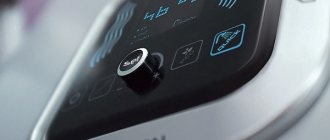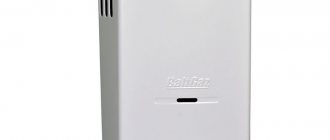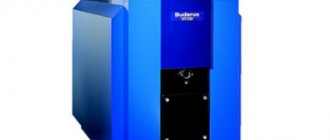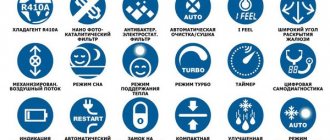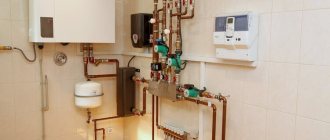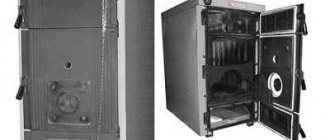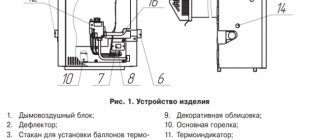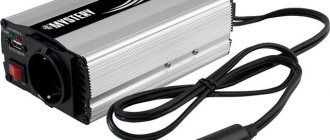The power of the water heater is one of the most important criteria that you should pay attention to when purchasing. The rate of water heating, both in flow-through and storage devices, and the normal operation of the device depend on it, since not every wiring can withstand high-power equipment. Therefore, so that when you turn on the installed water heater, it does not knock out the plugs every time, it is worth checking out its power in the store.
What determines the power of a water heater?
This indicator is determined by the heating element (heating element) installed in the device - it is this that heats the water. The operating principle is similar to an electric kettle, i.e. the more powerful this element, the faster the water will heat up to the temperature set by the user. The power of the heating element depends on the type of water heater: instantaneous or storage, so it is worth considering each of them in more detail.
Instantaneous water heaters
The principle of operation of instantaneous water heaters is implied in their name: water is heated instantly, passing through a chamber with a heating element. Such instant heating requires powerful heating devices. Therefore, the power value of instantaneous water heaters ranges from 6 to 27 kW, depending on performance . In this case, the outlet water temperature is 30-40 degrees, depending on the time of year. Capacity 1.8-4 liters per minute. But it is not always right to choose the most powerful device: here it is important to evaluate the capabilities of your wiring.
It is recommended to connect devices with a power above 5 kW to a three-phase 380V outlet
To make the right choice, the buyer should first decide for what purpose he is going to install the water heating device.
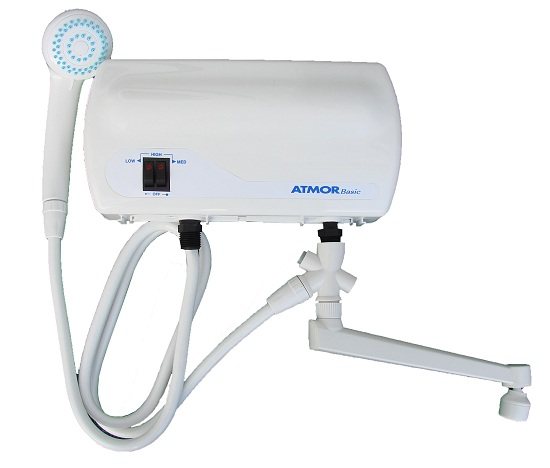
For example, in the kitchen, especially for a small family, it is quite appropriate to install a instantaneous water heater with minimal parameters. Their productivity does not exceed 3 liters per minute, the outlet water temperature is 30 degrees, and the power of the heating element is 3-4 kW. While for a shower, the performance indicators of such a device should be higher, about 6 liters per minute. This means that the power of the device will be at least 7 kW. Not every wiring can withstand such equipment, especially in old houses. But this does not mean that a 4 kW water heater cannot be installed in the shower, especially since all models, regardless of their performance, already come with a shower head. Here it is worth thinking about the comfort of using the device.
Storage water heaters
In such devices, the power of the heating element must correspond to the size of the tank. For example, in compact 10-25 - liter tanks, heating elements with a power of 1.5-2.5 kW are installed, and to heat 100 liters of water you will need a heating element of at least 4-5 kW.
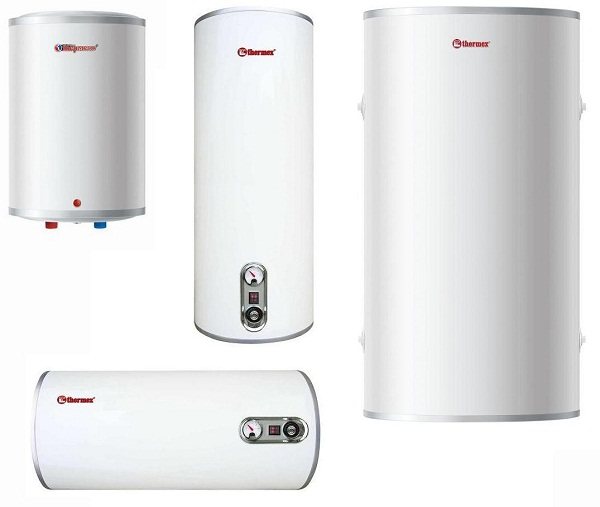
In some modern boilers, the tanks of which have a large volume, not one, but two heating elements are installed. At the same time, the user has the opportunity, through the control system, to turn on both one heating element and, to speed up operation, the second. For example, the Ariston ABS VLS Evo PW 100-liter model is equipped with this feature. Accordingly, the devices will consume more electricity.
Electricity consumption depending on the type of water heater
Before buying a water heater, you need to determine how much water you will spend per day. As a rule, this figure is different for each family and ranges from 25 liters per day (wash hands, wash dishes, take a quick shower) to 250 liters (daily bath) per person.
As a rule, storage heaters consume less electricity than flow heaters. But it all depends on the volume of the tank. The larger the tank, the more energy is needed. Flow-through ones are convenient because there is no need to wait for the water to heat up. But, at the same time, if you heat it not to the usual 45 0 C, which happens at the output, but to a comfortable 60-70 0 C, then the cost of consumed electricity will increase significantly.
How to calculate the available water heater power for your home
First of all, you need to find out what power the home electrical network is designed for. Here it is also worth considering the simultaneous consumption of electricity by other devices. It is not possible to turn off all the electrical equipment in the house every time to heat the water.
Quite often, the possibilities of residential wiring are quite modest and do not exceed 10 kW. Therefore, in such a room it is impossible to install a powerful instantaneous water heater, since the circuit breaker will trip every time. But it will be possible to use a small-volume storage boiler, the heating element of which is designed for 1.2 - 2.5 kW.
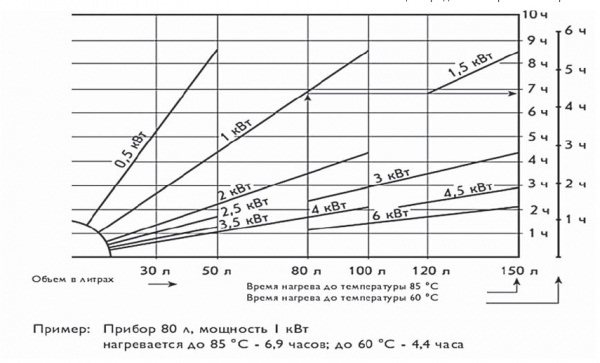
Before purchasing such electrical equipment, you need to find out the availability of kilowatts for use in your apartment or house. Afterwards, from the total number you should subtract the power of those devices that will somehow work simultaneously with the water heater. For example, refrigerator, free-standing freezer, TV, computer, kitchen appliances (which are often included). The result is power that can be used to operate a storage or flow-through device for heating water.
Popular models of storage water heaters of different capacities
Finding a suitable instantaneous water heater option for yourself is not difficult. For example, the range of such devices from THERMEX Stream series has two colors - white and silver, with a power of 3.5, 5 and 7 kW.
If the instantaneous water heater is installed to supply several water intake points at once, for example, for the kitchen and shower at the same time, then the power should be even greater. Thus, Ariston Fast Evo 11 C has a 19 kW water heater and its capacity is 11 liters per minute. A model from the German manufacturer AEG DDLT PinControl is available for several water intake points - it has an 18 kW heating element installed. But the cost of such a device will be twice as much, since Ariston uses Chinese parts as components.
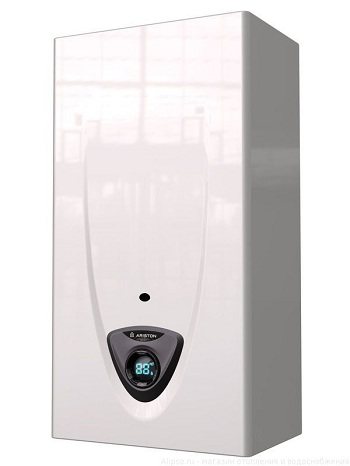
Water heater Ariston Fast Evo 11 C
Features of electric instantaneous water heaters

Internal structure of an instantaneous water heater.
An electric instantaneous heater heats water using constant electricity. The principle of its operation is as follows: inside a small special chamber there is a thermal element - a tubular electric heater, or heating element, which is a metal (most often copper) tube filled with a special heat-conducting electrical insulator and equipped with a conductive thread in the center.
The latter is made of nichrome and has a certain resistance, which allows the required specific power to be transferred to the surface of the heater. When the device is connected to the network, the heating element heats up and transfers thermal energy to the liquid passing through the water heater.
As noted above, the main advantage of heaters of this type is their compact size. In addition, they are environmentally friendly. The main disadvantage is that they require high power (6-27 kW), and therefore, special electrical equipment in the room (manufacturers do not even include a cord and plug for devices more powerful than 5 kW, so that users do not plug such a water heater into a household electrical outlet).
The choice of heaters of this type mainly depends on their performance, which is determined by 2 factors:
- incoming water temperature;
- power of the device itself.
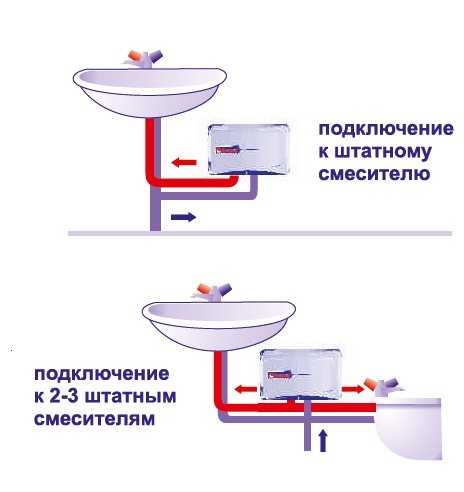
Options for using an instantaneous water heater.
Most heaters of this type are equipped with an automatic switching system when water collection starts. The flow device is quite capricious: it requires strong and constant water pressure, which is due to the features of its design. If the pressure is insufficient, there is a high risk that the heating element will burn out, and the manufacturer has every right to refuse warranty repairs to the buyer.
Therefore, experts strongly do not recommend installing flow devices in country houses that are not connected to a centralized water supply system, and on the upper floors of city buildings located in long-established areas where water pressure is usually unstable. This problem can be solved by installing pressure-increasing pumps that are mounted in the supply line.
Optimal comfortable conditions are created when using a water heater whose power exceeds 5 kW. When choosing equipment, you need to remember that there are devices for both single-phase (no more than 12 kW) and 3-phase networks (from 12 to 36 kW). To correctly compare speakers from different manufacturers, it is advisable to pay attention to what power appears in the device description - consumed or useful. These 2 quantities are related to each other by the efficiency of the device (efficiency factor). It is recommended to compare equipment based on the useful power provided at the output of the column.
What else should you consider when choosing an electric heater?
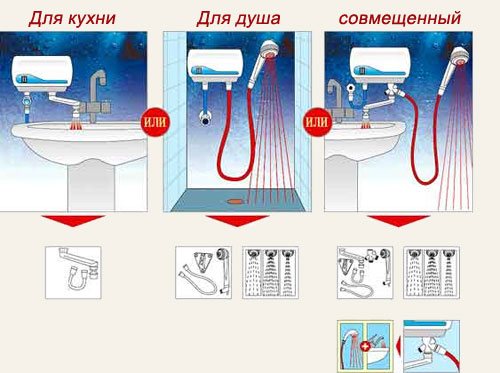
Principles for connecting an instantaneous water heater.
Flow-through electric heaters are divided into 2 large groups:
- System (pressure) with a power of 4.5 kW and above. Such models provide only an inlet and outlet for liquid. They cut into hot and cold water pipes for distribution to the entire living space. This is very convenient, because during periods when hot water is turned off, it becomes possible not only to take a shower, but also to use hot water from any tap in the apartment. Such a water heater turns on and off automatically when you turn on the water and turn off the tap, respectively.
- Non-pressure with a power of 3.5 to 8 kW, equipped with its own kitchen or shower head included in the device. Such water heaters operate exclusively at one water intake point and are most often used in the country. Devices of this type cannot be used with fittings other than those that were sold complete with the heater.
Experts recommend using small flow-through heaters with a power of 3-6 kW, equipped with shower heads, only in the summer. In winter, consumers often receive complaints that a water heater that worked excellently in the summer now suddenly stops heating water normally. And the reason is that in summer the temperature of unheated water was about +18°C.

Installation diagram of a homemade instantaneous water heater with multi-point water supply.
And a small water heater with a power of 3.5 kW with a delta of 25°C, giving 3 liters per minute, easily warmed the water to a comfortable 40°C for washing. And in winter, the incoming water is much colder (on average 5°C). And it turns out: 5°C+25°C=30°C. Under water at this temperature, a person naturally feels uncomfortable.
And the equipment itself has nothing to do with it, nothing is broken in it, it functions as usual. Simply small flow-through heaters were developed for warm countries (mainly Africa, Asia, Latin America), where there are no large differences between winter and summer temperatures, and the incoming water is approximately +15°C all year round.
Considering the low cost of such equipment, its compact size and configuration features, it is reasonable to purchase a small flow-through heater for each water intake point separately. This ensures energy savings on heating water in the pipes supplying it to the water intake points, if the taps are significantly removed from the heater.
How long does a storage water heater work?
Depending on the volume, it heats water from 1 to 5 hours. For example, to heat a 15 liter tank, a heating element with a power of 1.5 will take no more than an hour. According to the manufacturer, THERMEX CHAMPION series water heaters of 10 and 15 liters will heat a full tank to 60 degrees in 25 and 30 minutes, respectively. Well, for 100 liters of water to heat up, the consumer will have to wait at least 2-4 hours, despite the fact that the power of the heating element in such a device is higher - 2-3 kW. For example, THERMEX ROUND PLUS IR 100 V will be ready for use in 2.5 hours; it has one 2 kW heating element installed.
The owner of a water heater can always find approximate data regarding his own model in the instructions that come with the equipment.
How maintaining temperature saves energy
All models of storage devices are equipped with this function. Through the mechanical or electronic control panel of the water heater, the user sets the desired temperature. After turning on the heating element, the water begins to heat up. As soon as it reaches the desired temperature, the thermostat is activated, which stops the operation of the heating element. When water is consumed from the tank, cold water enters it again and mixes with hot water. In this case, the thermostat turns on the heating element again to heat the liquid.

If water from the tank is not consumed, then with the help of automation the water heater maintains its temperature set by the user. During the process, the heating element turns on and off. This function does not consume a large amount of electricity, only a few kW per day. Since the walls of the tank have a thermal insulation layer, heat loss occurs very slowly: in an hour the water cools by 1-2 degrees.
According to experts, in order to save money when using storage water heaters, it is necessary to keep them in “standby” mode, and not disconnect them from the network each time. Since much less electricity is spent on maintaining the temperature than heating cooled water.
The power of water heaters depends on their type. Flow-through devices consume more electricity, but they outperform boilers in terms of performance and price. Storage tanks require a certain time to heat water, but they are more economical to operate, especially if you do not turn them off and use the temperature maintenance mode.
Instantaneous water heaters or storage?
Date: May 21, 2010 |
Category: Other Information Tags: water heaters, gas, storage, instantaneous, electric This material was prepared by specialists. Do you need electrical installation or electrical measurements? Call us!
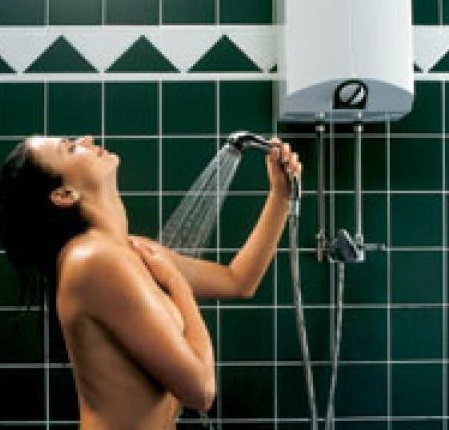
– the question is more than stupid. Of course, it is necessary and, of course, always. But what to do if there is a problem with this outside the city, or rather, even in the warm season in rural areas there is basically no hot water? There is only one way out - a water heater. Currently, purchasing a water heater is not a problem. Moreover, you can even choose the type that suits you best or perhaps you like better. Today there are only two types of water heaters: instantaneous and storage. Let us describe the main features of each type. The operating principle of instantaneous water heaters is simple: cold water is heated to the desired temperature by flowing through a special flask with a heating element. This is great because when you turn on the tap, the water heater turns on automatically, and literally after 30 seconds you get hot water. The only “minus” in this case is instantaneous water heaters, which you can read about at the link https://www.teplocom-m.ru/vodonagrevatel-protochniy/, are not intended for simultaneous use of hot water in several water sources, that is, you cannot wash dishes in the kitchen and at the same time wash in the shower. When installing an instantaneous water heater, it is important to remember that it consumes a large amount of electricity. This amount depends on the power of the equipment; it ranges from 3 to 27 kW. To take a comfortable shower, you need a water heater with a power of at least 18 kW, otherwise don’t expect good pressure and a large amount of water.

Storage water heaters (you can read more about them on the website https://www.teplocom-m.ru/vodonagrevatel-nakopitelniy/) have a completely different, opposite principle of operation. They are capable of simultaneously providing hot water to several water sources. However, this does not happen automatically as soon as you turn on the hot water tap, but only after the water heater is completely filled with cold water and heated it to a certain temperature. And this, you see, requires some time. And this is perhaps the main difference from an instantaneous water heater. The maximum temperature to which water can heat up is 80 degrees. Thanks to a special thermostat, when the temperature deviates from the set one, the water heater automatically turns on and starts heating. Thus, the main task of the thermostat is to maintain a constant set temperature. The power required for storage water heaters is quite acceptable for our electrical networks and does not require additional wiring. When it is in temperature maintenance mode, the power consumption is 0.2 kW. In general, its energy consumption is 2 kW. Storage water heaters also differ in volume. It completely depends on your hot water needs.
And now you just have to decide: what do you need - instantaneous receipt of an unlimited amount of hot water or a limited volume of water after a certain wait, but in several water sources at once? The answer to this question will be the type of your future water heater.
Other and useful information
Other and useful information
